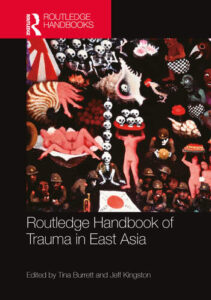
Kim Seong Nae
in Routledge Handbook of Trauma in East Asia, 2023
Abstract: During the mid-twentieth century, many residents of South Korea’s Jeju Island fled during the 4.3 Massacre to escape the mass killings. These former Jeju residents largely emigrated to Japan, with the largest community located in Osaka and Tokyo. Such Zainichi survived as a minority group in Japan by organizing themselves along the social lines of community membership based on their former villages on Jeju. They would regularly observe ancestor worship at home and also organize shamanic collective rituals both in Japan and their former home villages on Jeju. A part of the Zainichi community has participated in the exodus to North Korea since 1959. The trauma of social stigmatization of the so-called ‘red insurgents’ has sown divisions within the Zainichi community, even today, over seventy years after the 4.3 Incident began. This chapter is based on oral histories about family loss and dispersion of Jeju-based Zainichi after the massacres and social destruction during the 4.3 (1947–1954), analysing ethnographic fieldwork and interviews conducted from 2010 to 2016. A main focus of this study is the ritual mediations of traumatic social division and reconnection in the practices of postmemory involving shamanic spirit possession, ancestral rites, reburials of remains exhumed from mass graves and the construction of memorials on the massacre sites. These commemoration rituals seek reparative justice by ‘bringing home’ together all souls of the dead regardless of their ideologically positioned status, state-sanctioned ‘4.3 victims’ or stigmatized ‘red insurgents’. Through ritual practices, not only the living but also the dead scattered in various places (Jeju, Japan, North Korea) continue to create transnational networks of spiritual solidarity and social repair of kinship and village community.
About the author: Kim Seong Nae was a HYI Visiting Scholar from 2015-16.
